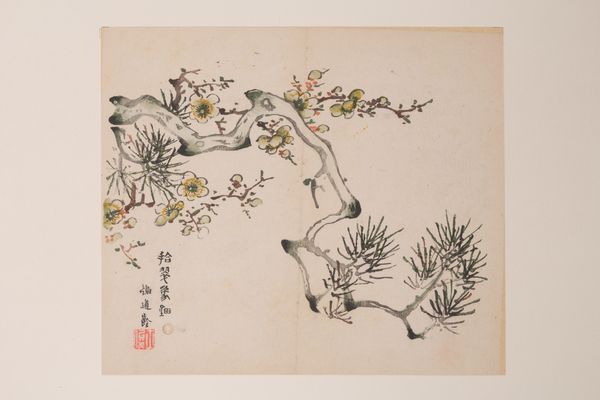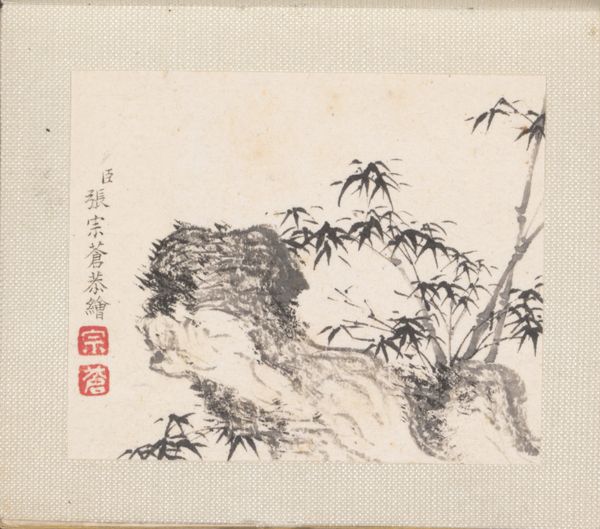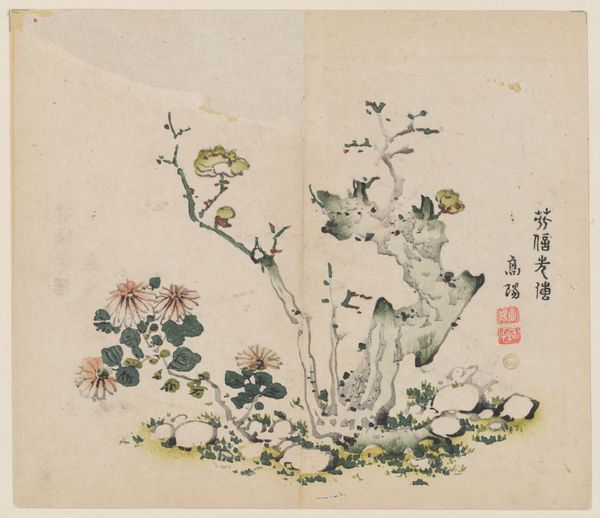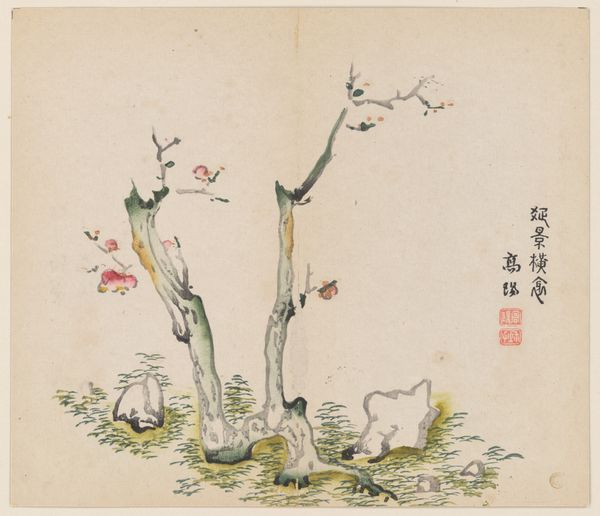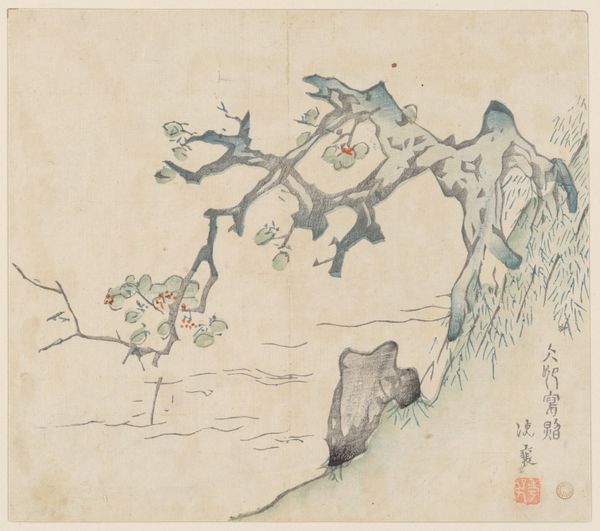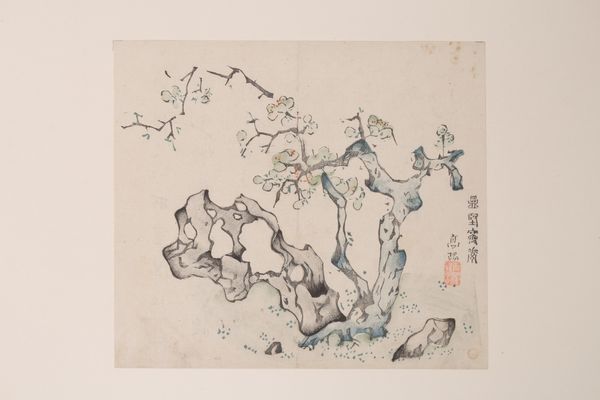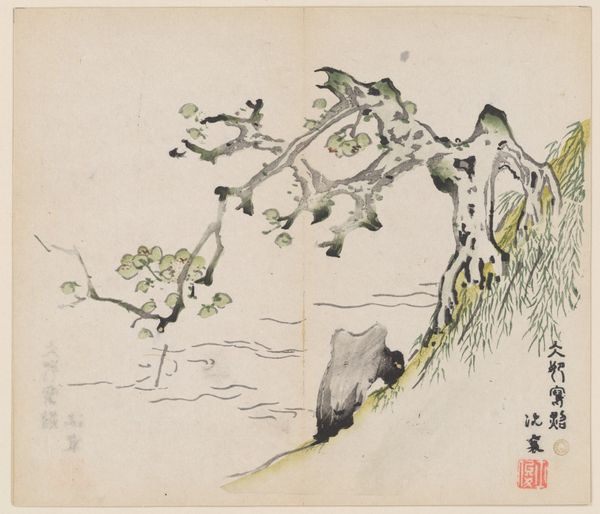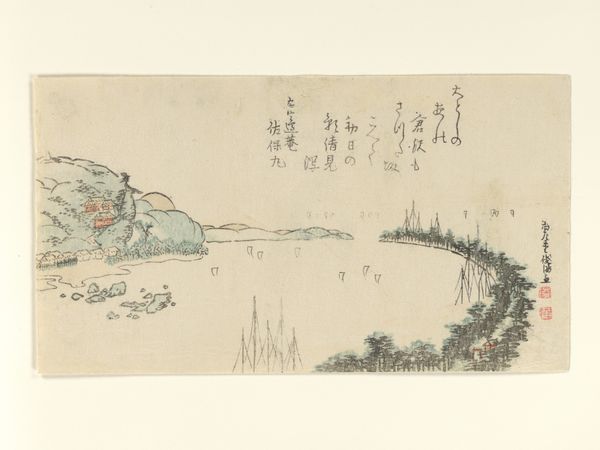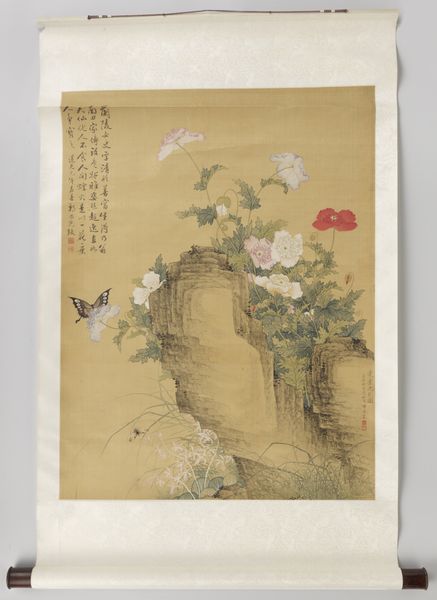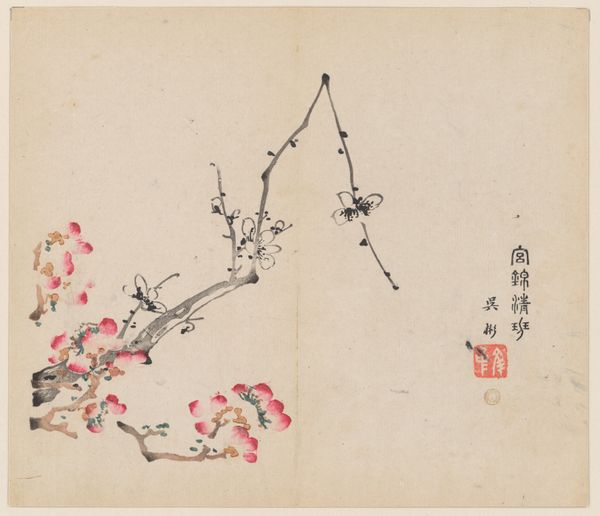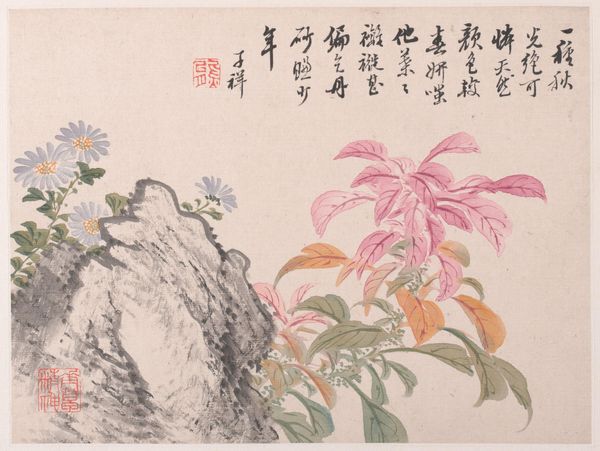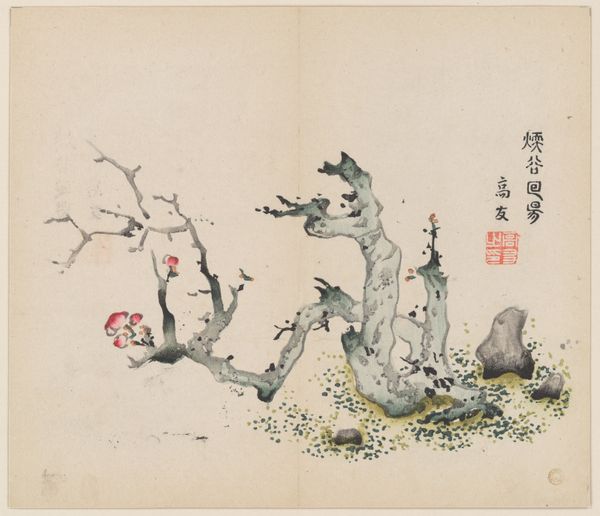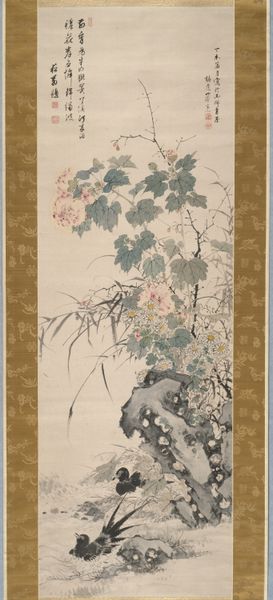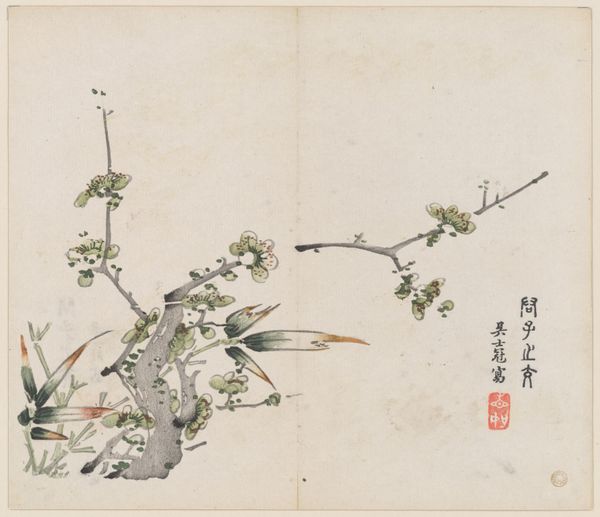
Page from the Ten Bamboo Studio Manual of Painting and Calligraphy 1633
0:00
0:00
painting, print, watercolor, ink, woodblock-print
#
ink painting
#
painting
# print
#
asian-art
#
landscape
#
etching
#
22_ming-dynasty-1368-1644
#
watercolor
#
ink
#
woodblock-print
#
orientalism
#
china
#
watercolour illustration
#
calligraphy
Dimensions: 9 15/16 x 11 9/16 in. (25.2 x 29.4 cm)
Copyright: Public Domain
This is a page from the Ten Bamboo Studio Manual of Painting and Calligraphy, created by Hu Zhengyan in the early 17th century. Look closely at the plum blossoms and the jagged rocks. Within the cultural landscape of the Ming Dynasty, these symbols carried profound meanings. The plum blossom, heralding spring, represents resilience, renewal, and purity of spirit. You see, its delicate beauty emerges even amidst the harshness of winter. The Taihu rocks, with their grotesque, almost tortured forms, were not merely decorative; they symbolized steadfastness and endurance. These rocks, carefully selected and placed, evoke the profound connections between the human spirit and the natural world. Consider how these motifs echo across time and cultures. The plum blossom, like the lotus in other traditions, reappears as an emblem of hope and perseverance. It's as if the collective memory of humankind recognizes and cherishes these symbols, imbuing them with the power to stir our souls. It highlights the cyclical nature of existence—the constant dance between decay and rebirth, despair and hope—engaging viewers on a subconscious level. The emotional weight of such potent images is then passed down through history, their meanings evolving with each new interpretation.
Comments
No comments
Be the first to comment and join the conversation on the ultimate creative platform.
